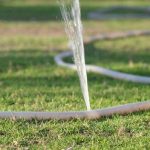Swimming Pool Maintenance
Due to the fact that there are not many public swimming pools in Dubai due to the huge amount of beaches, and most of the hotels require paid membership to utilise their facilities, it’s very common for residents of Dubai to have a swimming pool in the grounds of their property or within their communities. With the stifling hot summers experienced across the UAE, having a way to cool down is of great importance.
However, whilst swimming pools are great for fun, exercise, relaxation and surviving the summer heat, there is a great amount of wasted water associated with their use. The average swimming pool in Dubai loses an estimated 1-3% of its water every week due to evaporation, and that is without experiencing any problems in the way of water leaks. With an average sized pool, losing just one inch of water is equal to 2000 litres. As we all know, water is a very previous natural resource and trying to conserve it as much as possible is a worldwide effort. Therefore, we thought we’d offer some tips and advice on how to keep your swimming pool maintained to a high standard, thereby reducing the risks of wasted water.
A first point, when considering evaporation, is to ensure that your pool is kept covered whenever you are not using it. This will help to reduce evaporation to its lowest level.
As trying to encourage children to avoid splashing each other is an impossible task, this still causes regular amounts of water to leave the pool. This is a source of water waste; fun sadly cannot be had without lots of splashing.
However, the key aspect is for you to be regularly inspecting and monitoring your pool for leaks and more extensive water problems. A large amount of the pipework for the pool will be underground so it’s important to identify any wet patios or paving and soggy grass patches or flowers beds. This could indicate an area where water is regularly congregating indicating an underground problem. The main types of swimming pool leaks include the following:
– Leaking water from conduit pipes, perhaps due to erosion, cracks or a loose fitting.
– There are different types of swimming pool surface and problems could include a tear or hole in the vinyl liner or a crack in the shell, which may be made of fiberglass or gunite. Cracks will not only result in regular amounts of water leaking through into the surrounding grounds but there is also the risk of algae and other bacteria entering through the crack, causing the water to become harmful and a potential health risk.
– The plastic skimmer could have become detached from the pool itself which will need to be repaired.
– Ensuring the swimming pool’s pump is working efficiently and correctly is an important area to check. If water is leaking from the pump then water will be visible on the floor in the surrounding area.
All of the above factors share the same basic principle: the more water that leaves your pool, the more you have to put back in. Or, to put it another way, the more water you keep in your pool, the less water you have to use to fill it back up. Society has to be encouraged to not only consider the financial costs surrounding water leaks but also the terrible waste of a natural resource which the world needs to survive—an incalculable cost.
If you believe you may have a problem with your pool and you are concerned that it’s leaking water, then LeakDtech can assist using their Annual Health Check Service which will completely inspect the pool and its surrounding pipework and pump room to identify any leaking water and pinpoint its location, allowing for a swift repair. Whilst fun is every families number one priority, its important to keep an eye on your pool for those unseen leaks always.




